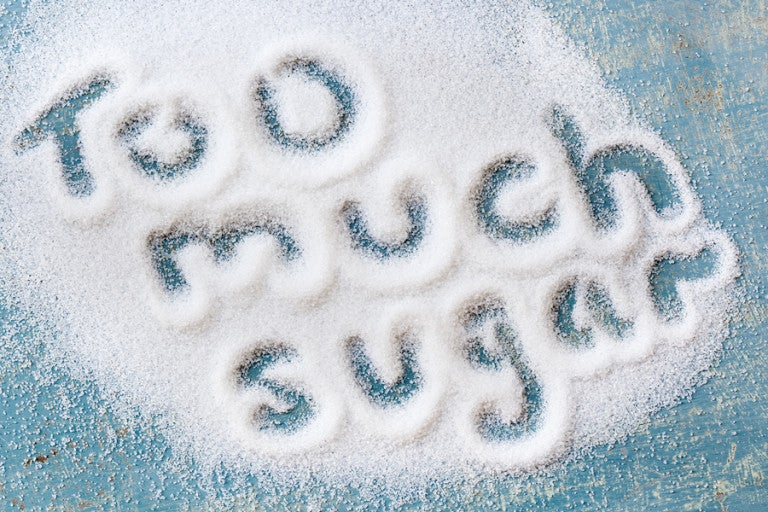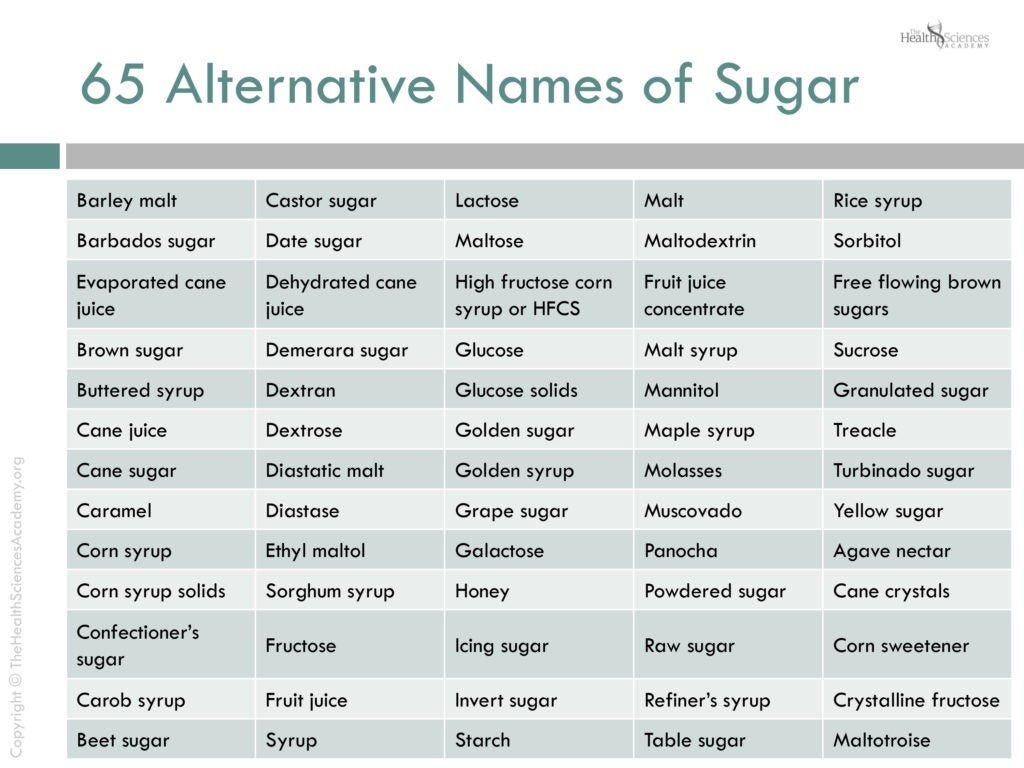Here’s the Scoop on Sugar
Posted in Announcements Blog Fitness Fitness & Wellness Corner News
November 2019 Fitness & Wellness Corner
Maegen C. Stoner, Director, Fitness & Wellness

We’re heading into the holiday season and I can sure tell you what’s on my mind, the sweet stuff 🙂 Pecan pie, apple turnovers, pumpkin bread, you name it! But I’m really here to catch you up to speed on the growing concern over added sugars.
The Basics
- Naturally occurring sugars are found naturally in foods like fruit (fructose) and milk (lactose) (Sugar 101).
- Added sugars include any and all sugars or caloric sweeteners that are added to foods and beverages during processing or preparation (Sugar 101). Added sugars are NOT found naturally in foods (Cut Down on Added Sugars) and CAN include natural sugars like white sugar, brown sugar, honey, as well as other sweeteners that are chemically manufactured that you add yourself (aka that teaspoon of sugar you added to your tea of coffee) (Sugar 101).
- The average American consumes 270 calories of added sugars each day. That’s approximately 17 teaspoons of sugar (Cut Down on Added Sugars)!
- Almost half of the added sugars in our diet come from drinks-items like sodas, fruit drinks, and other sweetened beverages (Cut Down on Added Sugars).
- The American Heart Association (AHA) suggests limiting daily intake to 6 teaspoons (25g) for women, and 9 teaspoons (38g) for men. Recommendations for children vary depending on age and caloric needs (How Much Is Too Much).
So what’s the big deal?
Consuming too many foods and beverages with added sugars makes it difficult to achieve a healthy eating pattern (Cut Down on Added Sugars). It’s also extremely easy to exceed the daily recommended serving suggestions. Added sugars are very pervasive in our food supply and show up in items like yogurt, cereal, salad dressings, pasta sauce, peanut butter, and almond milk to name a few. Added sugars contribute to your daily caloric consumption, but do not add any nutritional value or essential nutrients to your food intake (Cut Down on Added Sugars).
The addition of excess added sugars in the diet over long periods of time can also affect the natural balance of hormones that facilitate necessary and critical bodily functions (How Much Is Too Much). Increased intake of added sugars raises the levels of glucose in the bloodstream, which can trigger the body to produce more insulin. A higher presence of insulin, can cause the body to store more food calories as fat (How Much Is Too Much). It also affects another hormone, leptin, which is our natural appetite suppressant. It tells our body that we are full and can stop eating. An imbalanced insulin level combined with an increased consumption of certain sugars can lead to leptin resistance, which affects our bodies ability to “hear” the natural response to stop eating. The loss of our bodies ability to identify this trigger, promotes weight gain and over time, obesity (How Much Is Too Much).
Private Eye-Detecting Added Sugars in Your Foods
Unfortunately, you cannot easily tell by looking at the nutrition facts panel if it contains added sugars (Sugar 101). The line that reads “total sugars”, includes both naturally occurring and added sugars. Be sure to look one line further! Manufacturers are now required to include a line after “sugars” to identify “added sugars” per serving on the new nutrition facts label.
Additionally, it’s extremely helpful to be informed about terms related to sugar:
- Sugar-Free– less than 0.5g sugar per serving (Sugar 101).
- Reduced-Sugar or Less Sugar– at least 25% less sugars per serving AS compared to a standard serving of the traditional variety (Sugar 101).
- No Added Sugars or Without Added Sugars– no sugars or sugar containing ingredient such as juice or dry fruit is added during processing (Sugar 101).
- Low Sugar-not defined or allowed as a claim on food labels (Sugar 101).
Did you know that there are over 65 names for sugar?

How to Reduce Your Daily Intake of Added Sugars
You don’t have to give up all the foods you love entirely, but you can take small steps to limit added sugars and change how you eat.
- Determine how many calories you are consuming from added sugars. You can utilize apps on your smart device to assist you in tracking this to get an idea. Don’t have a smart device? You can keep a food log in a journal and refer back to it as a guide to calculate your average daily intake (Cut Down on Added Sugars).
- Find Balance- replace foods and drinks that are high in added sugars with healthier choices ((Cut Down on Added Sugars).
• Eat fruit for dessert
• Swap sugary cereals for unsweetened versions and add fruit
• Drink water or low-fat milk instead of soda
You can still enjoy the food you like with added sugars-just choose smaller portions and have them less frequently (Cut Down on Added Sugars).
• If you choose to have a soda, select a smaller size
• Add 1 teaspoon of sugar to your tea or coffee, instead of 2 - Check the Ingredients
Review the nutrition facts panel and look for added sugars in the ingredient list. The higher up the added sugars are on the list, the more added sugar in the product (Cut Down on Added Sugars).
Don’t have time to read? We get it! Check out this 5-minute video from Harvard Health Publications to learn more about hidden sugar in foods.
Resources:
“Cut Down on Added Sugars.” Https://Health.gov, Department of Health & Human Services , Mar. 2016, health.gov/dietaryguidelines/2015/resources/DGA_Cut-Down-On-Added-Sugars.pdf.
“How Much Is Too Much?” SugarScience.UCSF.edu, 8 Dec. 2018, sugarscience.ucsf.edu/the-growing-concern-of-overconsumption.html#.XZd6sy-ZPVp.
Figure 1: Harvard Health Blog. (2016, May 18). Too Much Sugar [Digital Image]. Retrieved October 4, 2019, from https://www.health.harvard.edu/blog/sugar-many-disguises-201605189590.
Figure 2: The Health Sciences Academy. 65 Alternative Names of Sugar [Digital Image]. Retrieved October 4, 2019, from https://www.google.com/url?sa=t&rct=j&q=&esrc=s&source=web&cd=27&ved=2ahUKEwias6KijYPlAhWKiOAKHXX0DpMQFjAaegQIAhAC&url=https%3A%2F%2Fthehealthsciencesacademy.org%2Fwp-content%2Fuploads%2F2014%2F08%2FThe-Health-Sciences-Academy_65-Names-Of-Sugar.pdf&usg=AOvVaw1I2jZOuEPt4u0yL56VtzJK.
“Sugar 101.” Www.heart.org, www.heart.org/en/healthy-living/healthy-eating/eat-smart/sugar/sugar-101.
This blog post was written to provide educational information only. This article should not be used as a substitute or a replacement for professional medical advice, diagnosis, or treatment. If you have questions or concerns about your personal health, you should always consult with your physician. It is recommended that you consult with your physician or health care professional before beginning any fitness regimen to determine if it is suitable for your needs. The use of any information provided by this article is solely at your risk.
